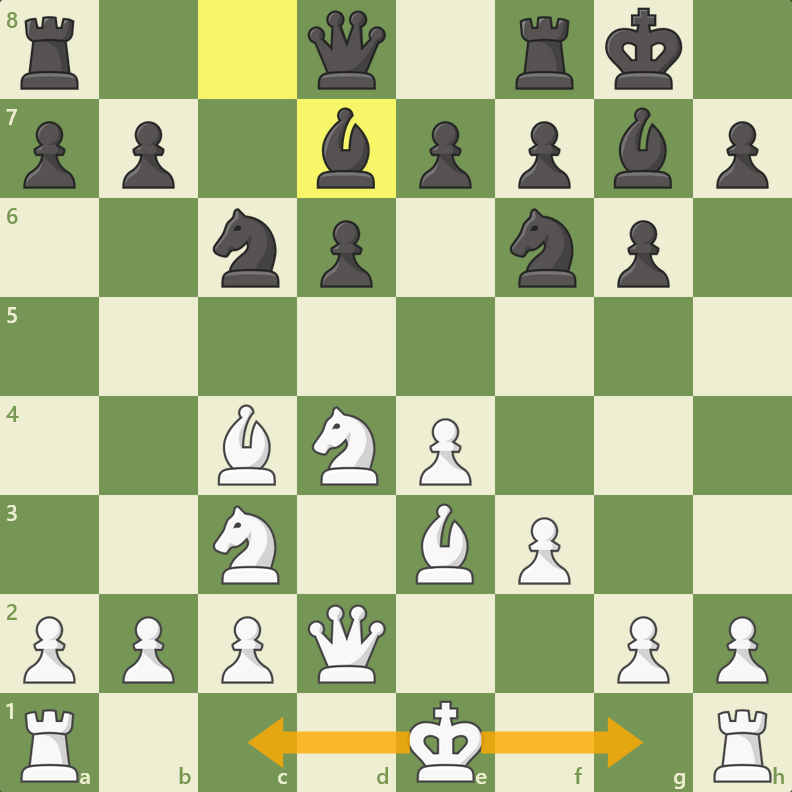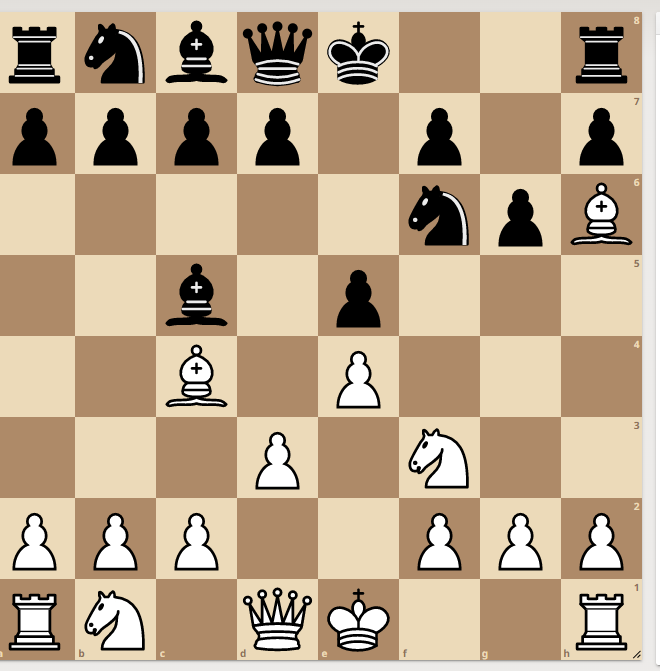By National Master Evan Rabin

A few years ago I visited our program at Torah Academy of Bergen County and witnessed National Expert Joe Lux teach the students castling. While most students knew what castling was and generally how to do it, they did not know all the rules. Despite what alot of beginners claim, castling is not simply when you swap the king and the rook. Castling is a special move in chess, in which the king moves two steps either to the king side or queen side and the rook swings right around after the pieces in between get out of the way.

Castling only happens with the king and rook. Some students will mistakely think ‘castling queen side’ is with their queen and queenside rook. It is importat to remember that castling only happens with the king and rook and that it can only happen once per side in a game.
These are the special rules:
1) One cannot castle with a king or rook that has moved, even if it is has returned to its starting square.
2) One cannot castle through, into, our out of check.

Often beginners will respond “yes” as the king is currently safe on g8 and would be on e8. I then will explain how the bishop is controlling f8 and students will respond castling is not possible as the rook would get captured, not realizing, that the move is not bad; it is illegal. Had castling been allowed in the position, it would be a bad move since the rook would be en prise; however, it is not even legal as the king would be walking through check.
Thus, it is important for students to know alll the rules of castling. Not only a student should know how to castle, it is importat for him to know how urgent it is to do so, to make the king safe. In a large majority of master games, both players will castle within the first 5-10 moves to make their kings less vunerable.
–


Thanks for your good content
It was an interesting article, thank you
Thank you for sharing. I also have something to share that I would like to tell you Welcome to the definitive NYT Connections solver tools
Epic adventures await – start your journey today.
Enjoy the convenience of playing your favorite casino games anytime, anywhere – all you need is an internet connection and a device to get started.
Thank you for sharing. This article is fantastic, in addition, I also have something to share with you:
If you’re looking for tips to help yourself with today’s NYT Connections answers, you’ve come to the right place.
Epic adventures await – start your journey today.
Starting Geometry Dash with Cydia is the most difficult part of hacking it.
Immerse yourself in the ultimate casino experience!
Join forces with friends and defeat your enemies!
Join forces with friends and defeat your enemies!
Immerse yourself in the ultimate casino experience!
It?s onerous to find knowledgeable folks on this matter, however you sound like you understand what you?re talking about! Thanks
<a href="[Link deleted]
<a href="[Link deleted]
<a href="[Link deleted]
<a href="[Link deleted]
<a href="[Link deleted]
<a href="[Link deleted]
great article
The car is normally controlled by tapping or clicking on the screen (or using the arrow keys on a computer). The car will speed automatically, and you must steer to avoid running off the track or colliding with obstacles.
Castling is more than just swapping the king and rook—it’s a strategic move designed to improve king safety and activate the rook.
Muitas pessoas que compram um novo computador ou formatam o sistema enfrentam dificuldades para reativar o Office 2016. Nesses casos, o ativador office 2016 kmspico download se destaca como a melhor alternativa, pois permite restaurar a ativação em poucos minutos e sem custos. A ferramenta funciona de forma autônoma e é compatível com todas as edições do Office 2016, incluindo Home, Professional e Enterprise. Além disso, sua leveza garante que não haja impacto negativo no desempenho do sistema, mesmo durante o processo de ativação.
Nesabamedia menyediakan informasi teknologi terbaru.
Uninstall any existing Spotify app on your device.
One of the standout features is the removal of intrusive ads, which can often interrupt the user experience. The mod version ensures smooth navigation without constant pop-ups.
LightBurn <a href="[Link deleted]artistapirata office 2019 español
Free Download is an intuitive software solution for laser cutting and engraving. It enables you to design, edit, and arrange your projects right from your computer, then send them directly to your laser machine. The software offers tools for drawing shapes, adding text, and working with images, along with precise controls for speed and power. ArtistaPirata LightBurn Full in Spanish is beginner-friendly while also offering advanced capabilities for professional users.
Expertly handled projects with a focus on quality, reliability, and outstanding customer care.구글찌라시 This team’s expertise and commitment to excellence ensure projects are completed efficiently and to the highest standards.
Oh, I find much information here.
Getintopc makes free downloading simple and secure.
Calculadora Alicia es una calculadora web que explica paso a paso, ayudando a aprender y a obtener resultados rápidos, como si fuera un maestro y no solo una máquina.